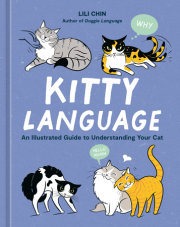Introduction How This Book Came To BeWell, it all started in early 2014. That year, I found out that dog breeds have countries of origin and was so fascinated by this idea that I began to look up where each breed came from. At the same time, I set myself a design challenge to draw all these breeds using a new-to-me minimalist illustration style.
Several months of research and drawing later, my “Dogs of the World” project came alive as a series of posters showing more than three hundred stylized dog breeds organized by geographical region. That year was life- and career-changing. The posters went viral on the internet, attracting illustration and licensing clients, and connecting me with dog lovers around the world, which was the best reward of all. Owners of rare dogs were thrilled to see their pets represented, and others were excited to tell me about breeds from their country that I had missed. I learned even more after publishing the posters, and it has been a joy to continue discovering and drawing breeds I wasn’t familiar with. In the end, my obsession became the genesis of this book, and in these pages, I’ve featured illustrations of as many dog breeds as I could fit, each with a few words about their history and job.
Although you can find information about a breed’s appearance, size, historical occupation, and temperament on any kennel club website, and there are loads of books that provide the same content, I do something different here. Instead of making a shopping catalog of breeds, I look at the history and idea of a “breed” itself.
For instance, as I wrote this book in 2023, the Bracco Italiano had just been recognized as a new breed by the American Kennel Club. But the thing is, they are not actually new. Bracco Italianos were recognized as a breed in Europe in 2015, and dogs that resemble and do the job of the Bracco Italiano have been around in Italy for centuries. So, what does it mean for a type of dog to become a recognized breed? And what is a breed, anyway? The answers are both fascinating and thought-provoking, and now I get to share them with you!
I talk about how our diverse modern breeds were first created in Victorian England and elsewhere from landraces or village dogs (more on these in a bit) and have since become like dog “brands” associated with different looks, personalities, ancestral jobs, and genetic signatures. (It’s worth knowing that many of these breeds are susceptible to health conditions that were created in the breeding process.) Breed populations have varieties; that is, subpopulations with different coat colors and coat types—some that are formally accepted, and others that are not. Within a breed there are often many bloodlines or lineages—these are genetically distinct subpopulations.
I also discuss landraces and village dogs, which are indigenous to different geographical regions, may have less streamlined appearances and more varieties, and are not recognized as breeds by kennel clubs. We rarely hear or read about them because their histories often aren’t documented. Visually, some could be mistaken for mutts, but they are as genetically distinct as many recognized breeds!
The dogs called mutts are the most diverse and genetically varied populations in the world. They may be the accidental offspring of purebred dogs, or intentionally bred pups with carefully selected purebred parents (aka crossbred dogs). In many circles, mixed-breed or no-breed dogs are considered to be “imperfect” or less important than purebred dogs, a perception based on nineteenth- and twentieth-century myths relating to blood purity and status. Our curiosity or desire to know which breeds our muttlooking dog may be, and the pride (or disappointment) we experience when we find out, is evidence of how emotionally invested we are in breeds. (I also look at how breed ancestry DNA tests work.)
What I hope this book brings to light is how deliberately constructed dog breeds are. What I mean by constructed is that the labels, categories, and histories that get attached to different breeds of dogs, as well as their physical traits and personality types, have been created or determined by groups of people (and in some cases, individuals) who want to perfect dogs in some way, to meet certain survival or emotional needs and aesthetic preferences.
In the gallery section, you will see breeds that have been created for various reasons. There are landrace varieties that have been split into separate breed identities based on simple physical traits (such as coat color or ear shape), or based on regional or political borders. And there are reconstructed breeds—vulnerable or extinct breeds that have been re-created and preserved by crossbreeding similar types of dogs. (Many “ancient” breeds are in fact only around two hundred years old.)
Dogs do not care what breed they are, nor do they have a say in the process, but
we do! As dog lovers or dog-curious people, we owe it to all dogs—whether they are single breed, mixed breed, purebred, or no breed—to understand where these labels come from and question what a breed designation can and can’t tell us about our individual dogs. With this book, I want to celebrate the diversity of dogs in our world and inspire questions that could prepare us to be more mindful and responsible dog adopters, buyers, and guardians.
For thousands of years, dogs have fit themselves into our world and adapted to our expectations of them. Dogs deserve to have their own needs met, to feel safe, to have more agency, and to enjoy good health and happiness. Writing and illustrating this book has expanded my world and increased my love for dogs even more; I hope it does the same for you.
Copyright © 2025 by Lili Chin. All rights reserved. No part of this excerpt may be reproduced or reprinted without permission in writing from the publisher.















